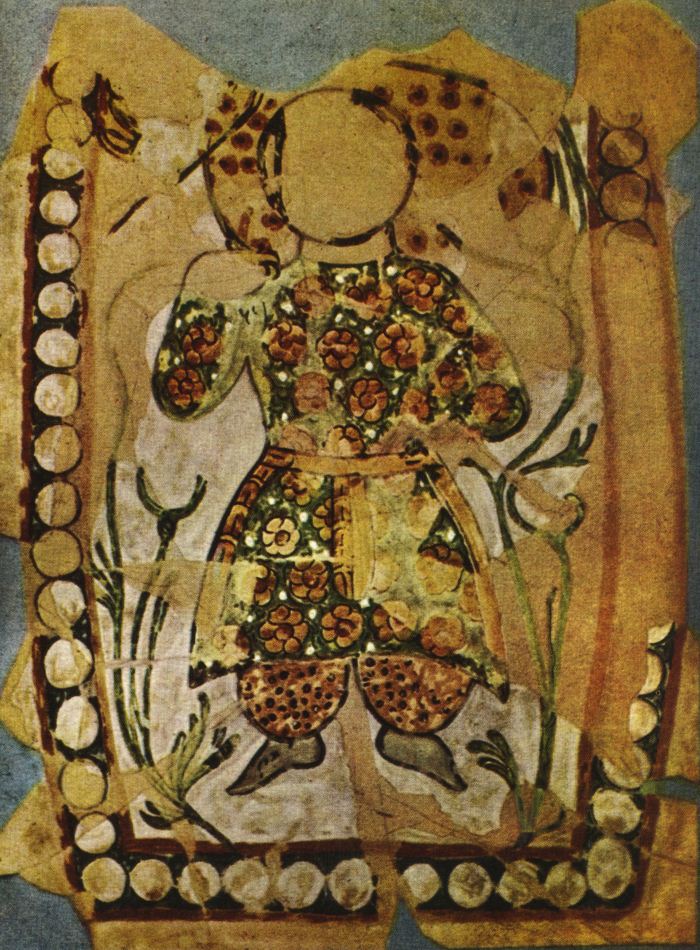Amazon Audible Gift Memberships

Amazon Audible Gift Memberships
“Hunter” from a polychrome fresco excavated at the palace of Jawsaq al-Ḵāqānī, Samarra, Iraq, 218-27/833-42.

A larger image of this “Hunter” from a fresco excavated at the palace of Jawsaq al-Ḵāqānī, Samarra, Iraq.
Image source: Chughtai Museum
In fragments of wall paintings and painted ceramic wine jars found in the palace of Jawsaq al-Ḵāqānī at Samarra in central Mesopotamia (218-27/833-42) male figures are depicted in the heavy, ornamented caftan with short, tight sleeves and hems dipping to points at the sides and ample, decorated trousers gathered at the ankles above small boots.
The caftan with short sleeves, a new feature, is worn over a tunic with long sleeves, recalling garments worn by both men and women in wall paintings from Qïzïl, perhaps dating from the 7th century c.e. Le Coq, 1926, p. 126).
The bright hues of green, red, and pink seem to conform to the dictum of Abu’l-Ṭayyeb Moḥammad Waššāʾ (246-325/860-936) that men of position should wear pure colors and avoid “ugly” tones in their clothing.
A leather belt with short thongs, or lappets, is associated with the caftan worn by noble and warrior figures at Samarra.
This belt, though also represented on the Boar Hunt and Stag Hunt reliefs at Ṭāq-e Bostān, was essentially a foreign fashion originally borrowed from nomadic peoples.
The first examples seem to come from 5th-6th-century burials of the Avars in Mongolia and southern Siberia, where two belts were customarily worn, the upper as a symbol of rank, the lower for suspending weapons (Ghirshman, 1953, p. 69).
The lappet belt was popular in Central Asia in the 6th-8th centuries, and on wall paintings there are many representations with small objects or weapons suspended from the thongs (Le Coq, 1924, pls. 14, 15, 17; Grünwedel, 1920, p. 128 fig. 14; see belts ii. in the parthian and sasanian periods).
Source: CLOTHING The early ʿAbbasid period (132-ca. 422/749-1031) by Elsie H. Peck
Back to ʿAbbasid Illustrations of Costume and Soldiers
Other 9th Century Illustrations of Costume and Soldiers

